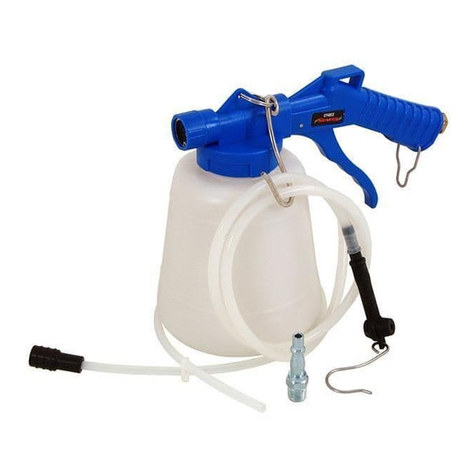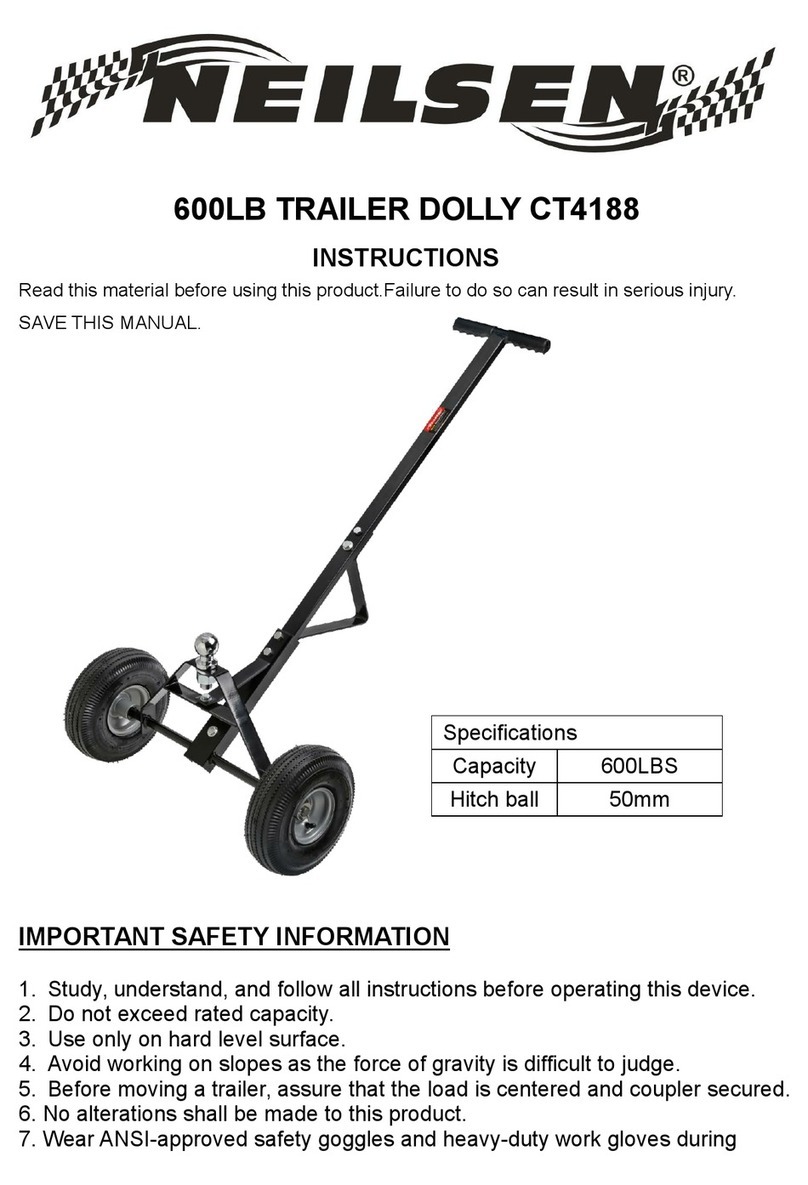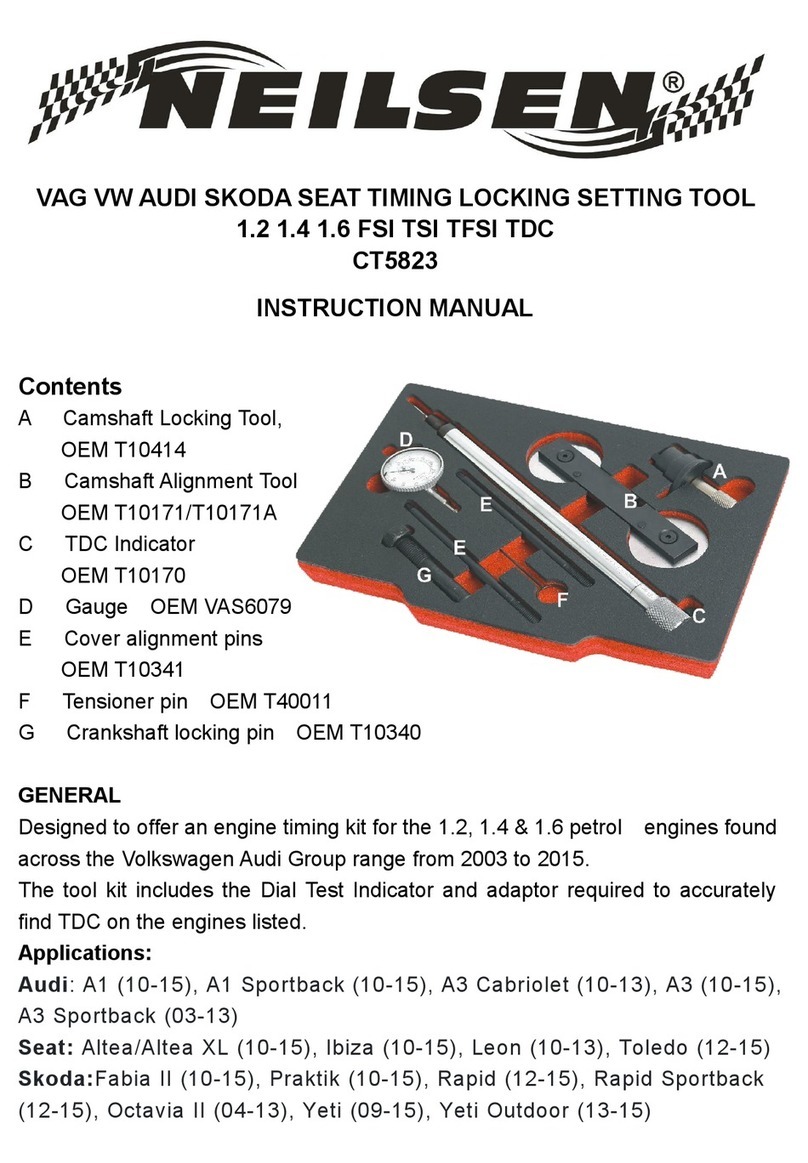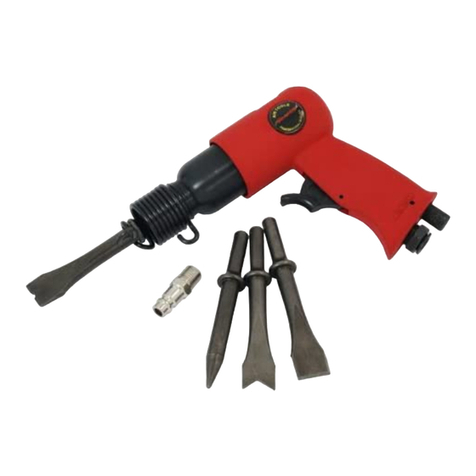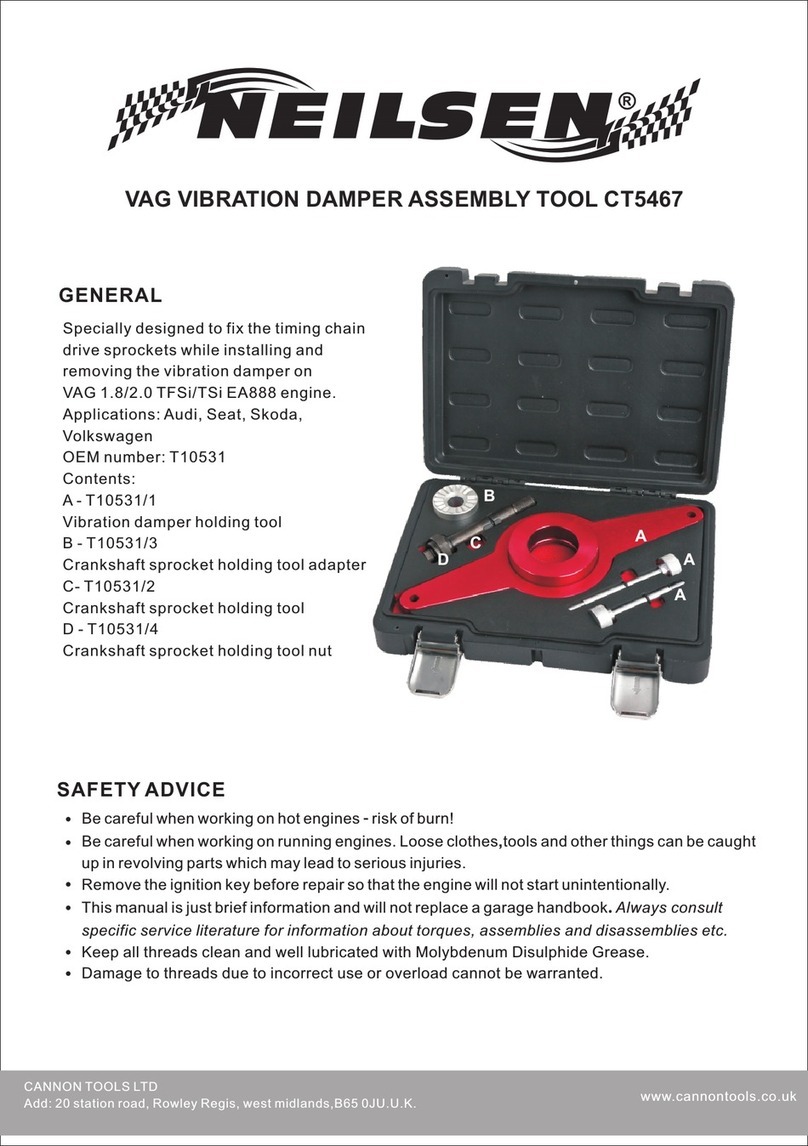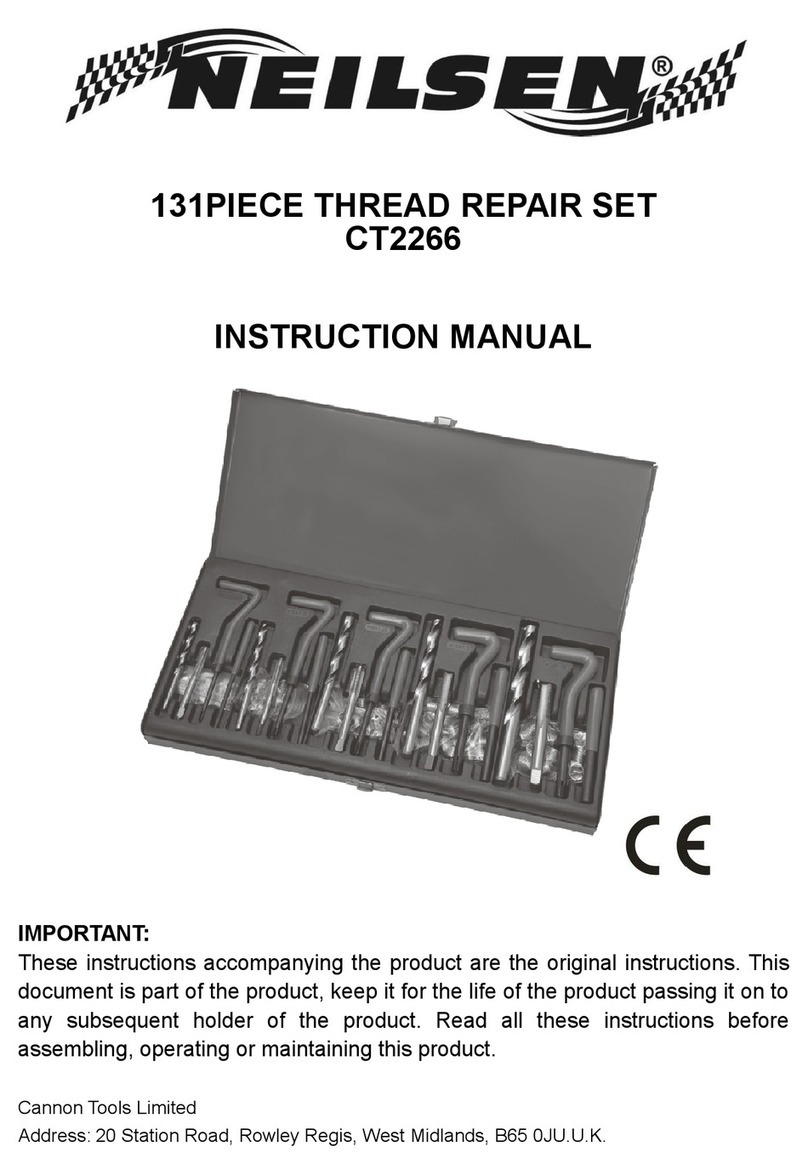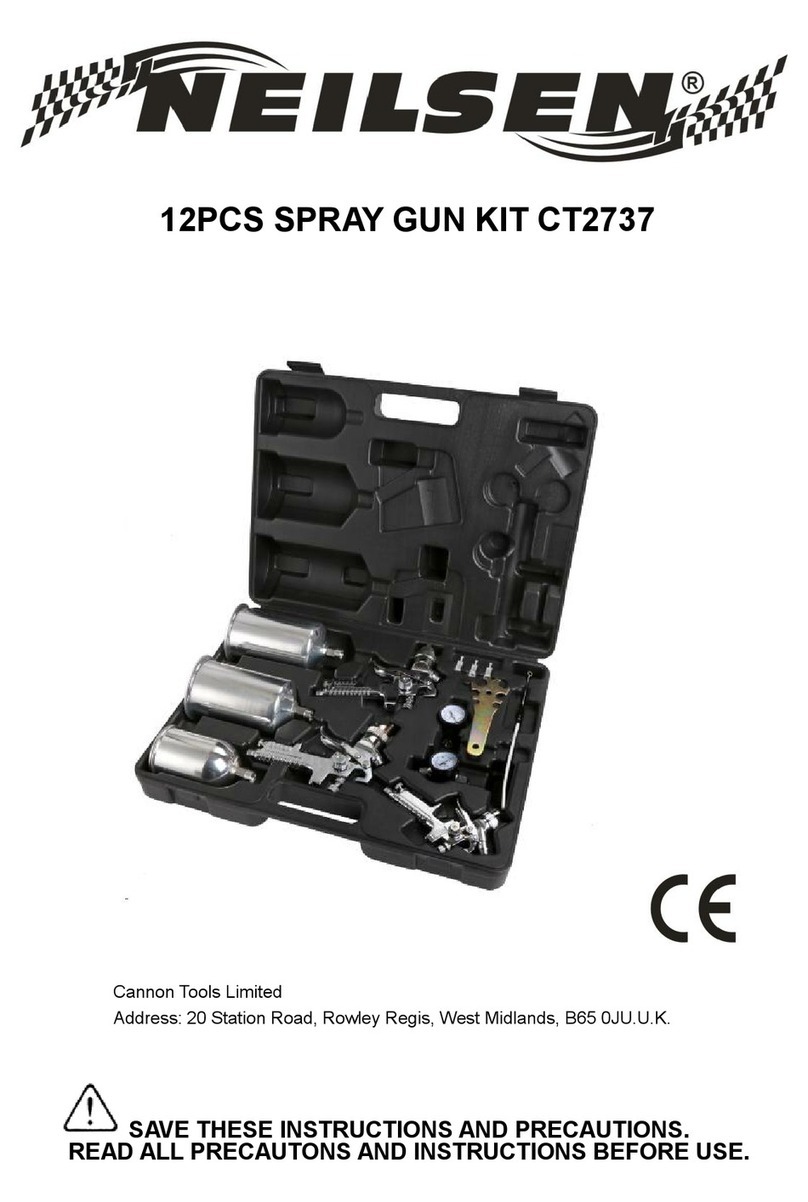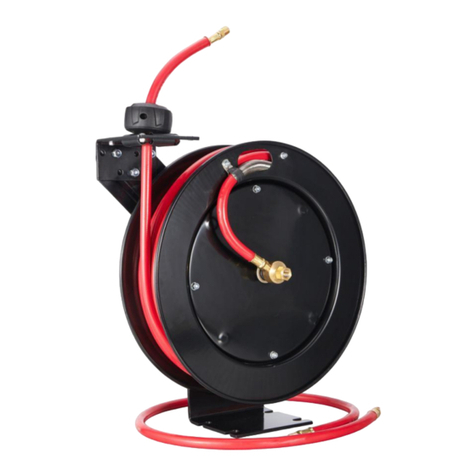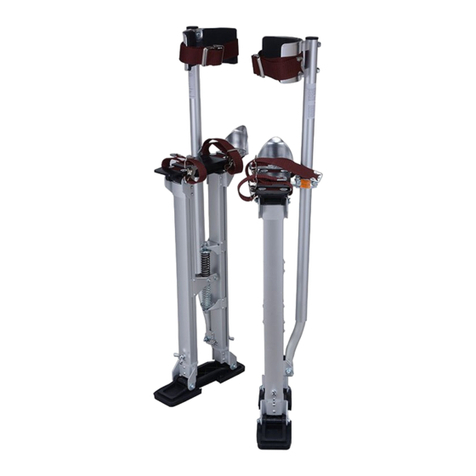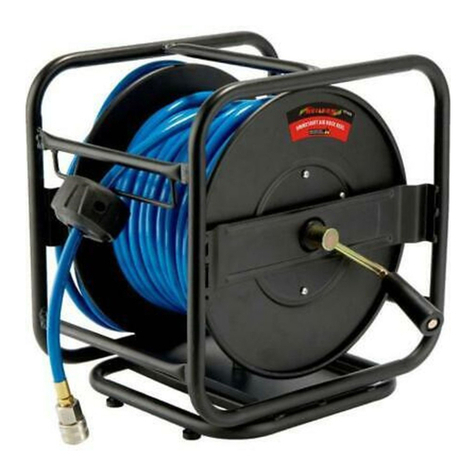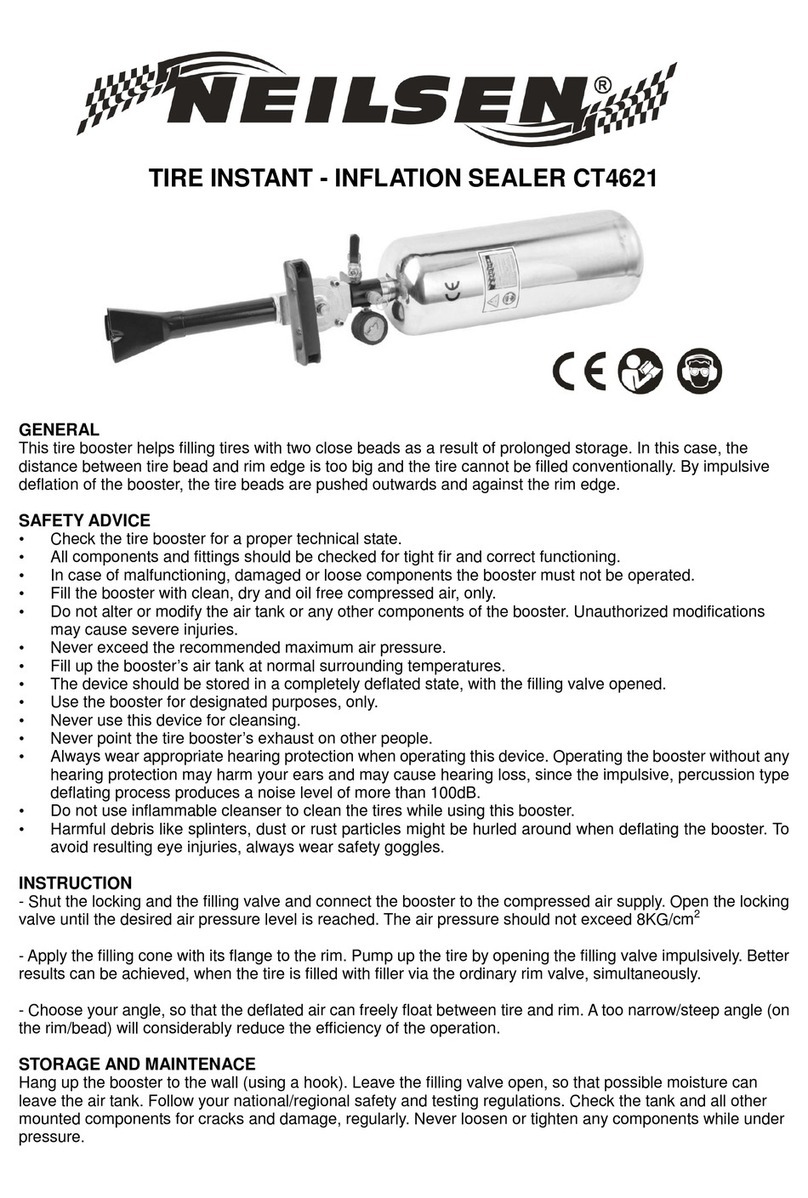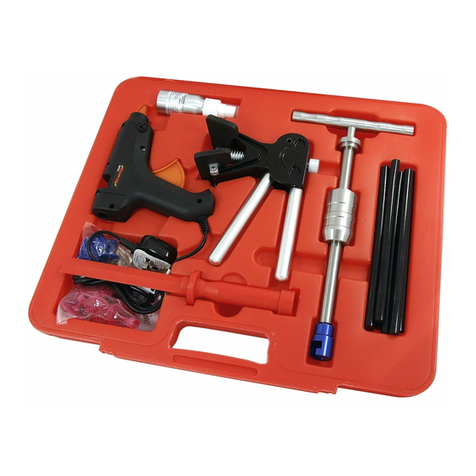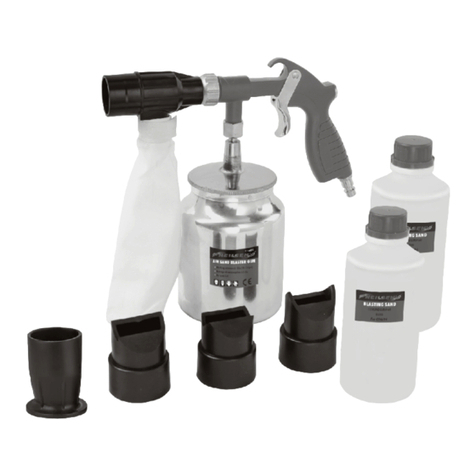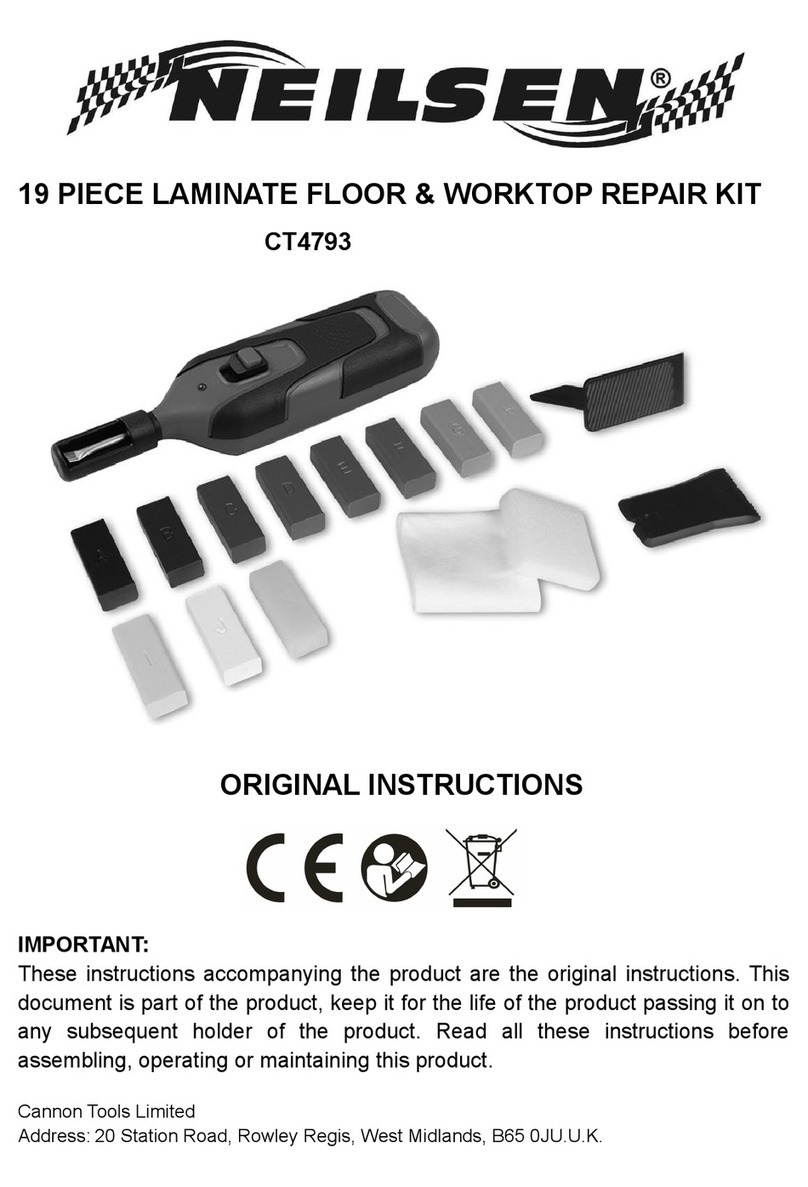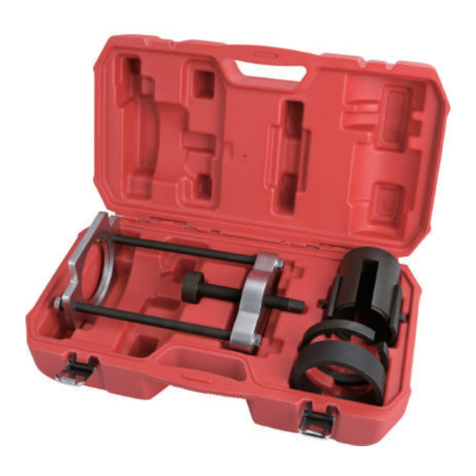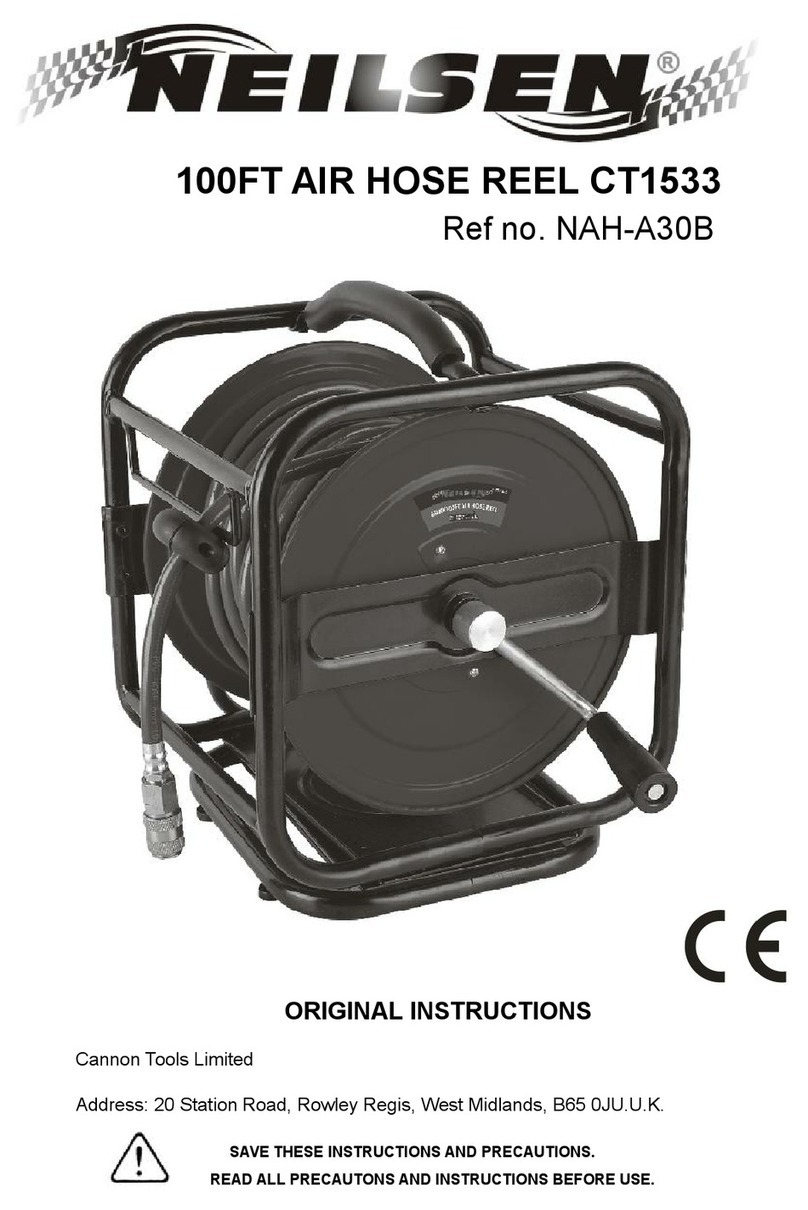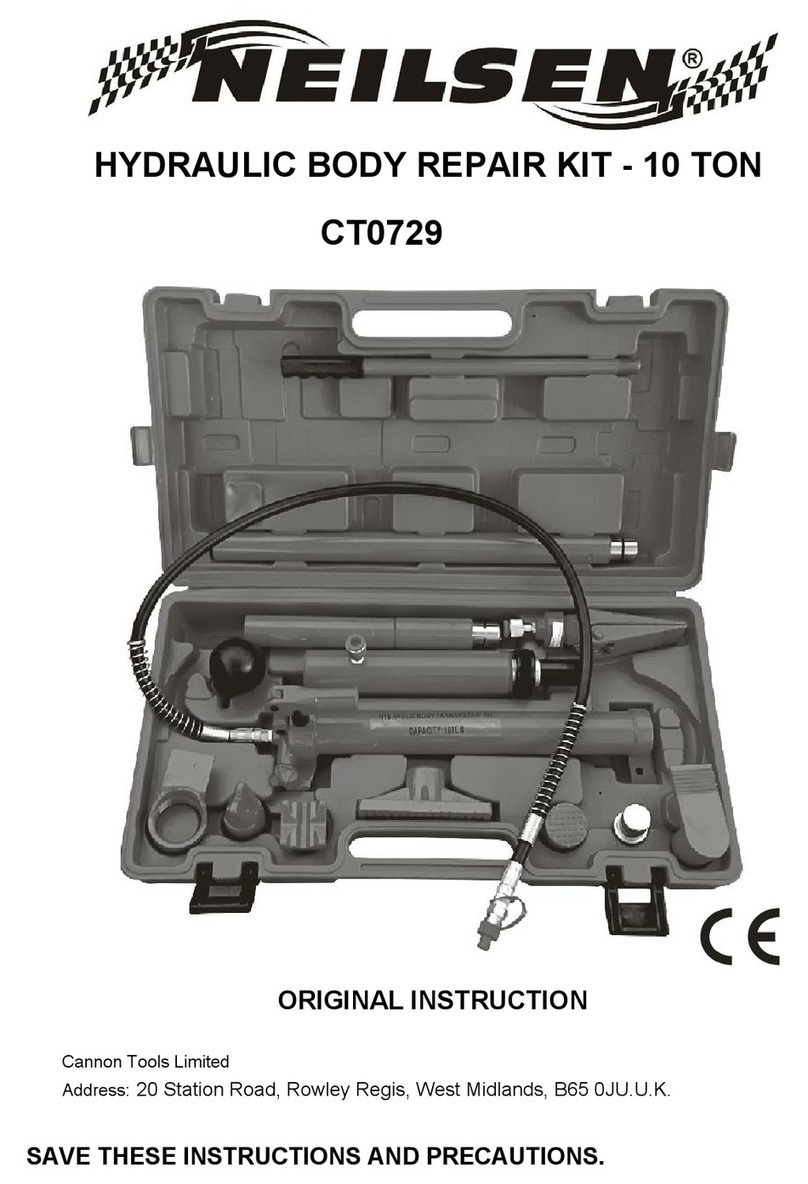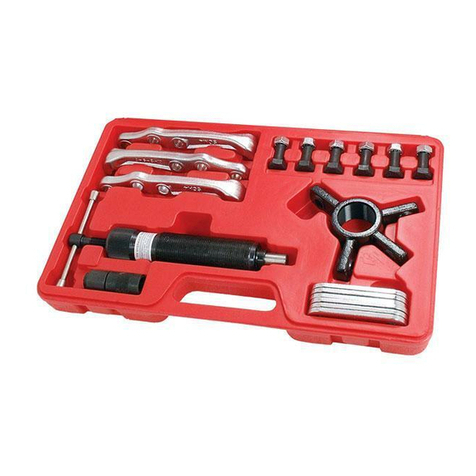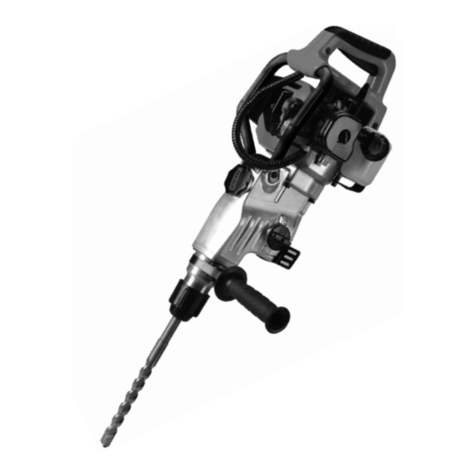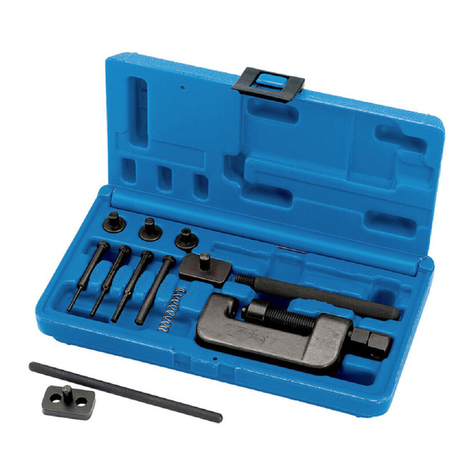
4
of inattention while operating the tool increases the risk of injury to persons.
2. Dress properly. Do not wear loose clothing or jewelry. Contain long hair. Keep hair, clothing,
and gloves away from moving parts. Loose clothes, jewelry, or long hair increases the risk of
injury to persons as a result of being caught in moving parts.
3. Avoid unintentional starting. Be sure the switch is off before connecting to the air supply. Do
not carry the tool with your finger on the switch or connect the tool to the air supply with the
switch on.
4. Remove adjusting keys and wrenches before turning the tool on. A wrench or a key that is
left attached to a rotating part of the tool increases the risk of personal injury.
5. Do not overreach. Keep proper footing and balance at all times. Proper footing and balance
enables better control of the tool in unexpected situations.
6. Use safety equipment. Adust mask, non-skid safety shoes and a hard hat must be used for
the applicable conditions. Wear heavy-duty work gloves during use.
7. Always wear eye protection. WearANSI-approved safety goggles.
8. Always wear hearing protection when using the tool. Prolonged exposure to high intensity
noise is able to cause hearing loss.
TOOL USE AND CARE
1. Use clamps or another practical way to secure and support the workpiece to a stable
platform. Holding the work by hand or against the body is unstable and is able to lead to loss
of control.
2. Do not force the tool. Use the correct tool for the application. The correct tool will do the job
better and safer at the rate for which the tool is designed.
3. Do not use the tool if the switch does not turn the tool on or off.Any tool that cannot be
controlled with the switch is dangerous and must be repaired.
4. Disconnect the tool from the air source before making any adjustments, changing
accessories, or storing the tool. Such preventive safety measures reduce the risk of starting
the tool unintentionally. Turn off and detach the air supply, safely discharge any residual air
pressure, and release the throttle and/or turn the switch to its off position before leaving the
work area.
5. Store the tool when it is idle out of reach of children and other untrained persons. A tool is
dangerous in the hands of untrained users.
6. Maintain the tool with care. Keep a cutting tool sharp and clean. A properly maintained tool,
with sharp cutting edges reduces the risk of binding and is easier to control.
7. Check for misalignment or binding of moving parts, breakage of parts, and any other
condition that affects the tool's operation. If damaged, have the tool serviced before using.
Many accidents are caused by poorly maintained tools. There is a risk of bursting if the tool is
damaged.
8. Use only accessories that are identified by the manufacturer for the specific tool model. Use
of an accessory not intended for use with the specific tool model, increases the risk of injury
to persons.
9. Accessories must be rated for at least the speed of the tool marked on the tool label. Wheels
and other accessories running over rated speed can fly apart and result in a risk of injury to
persons.
